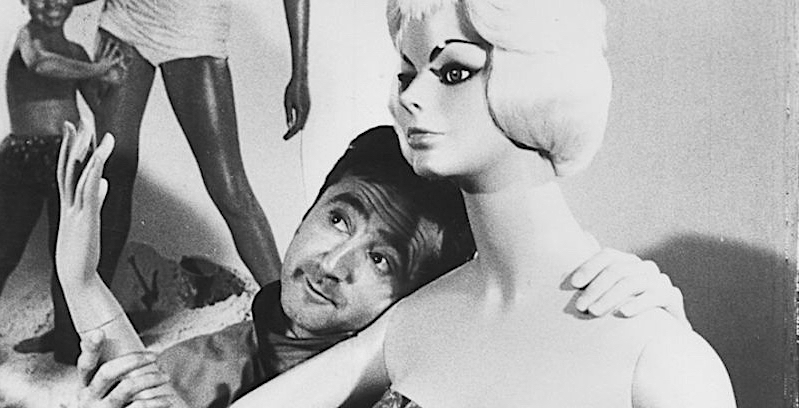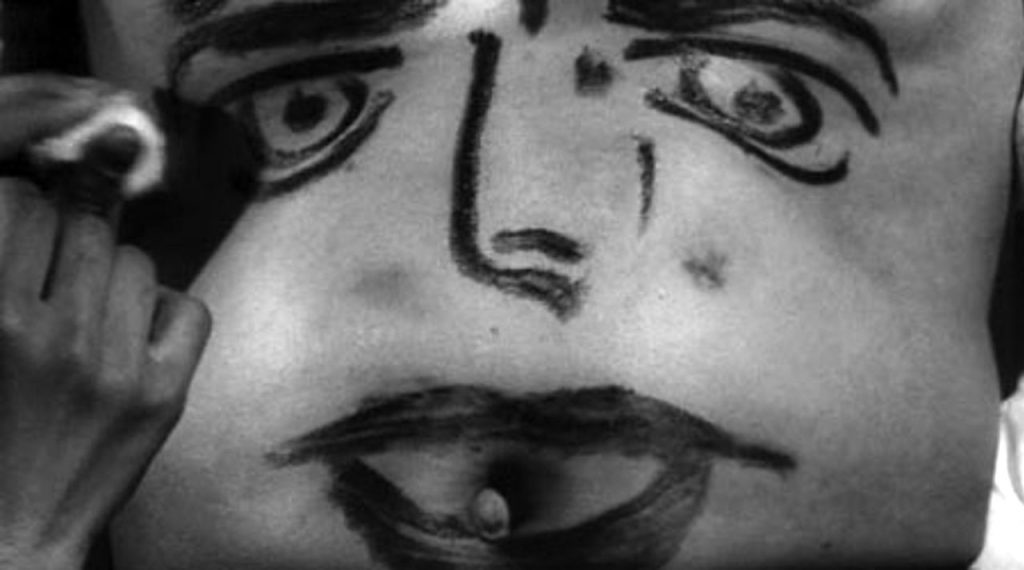Tehran Review
The French-Iranian Film Connection ❸
The 1950 box office success of the musical melodrama Sharmsar (later distributed as Ashamed) marked a turning point in the history of Iranian cinema. It made lead actress Esmat Baboli—as Delkash, already a celebrated singer—the country’s first true screen star. Domestic film production, entirely fallow from 1935 to late 1948 due to censorship pressures and lack of financing, blossomed quantitatively, so to speak, with an average of 20 feature films released annually over the proceeding decade and a half. In 1963, Tehran’s University of the Arts unveiled a well-resourced film division that would professionalize filmmaking in the nation in years to come. By 1965, the capital boasted 72 movie houses, with nearly 200 more around the rest of the country. The previous year had seen the release of the first Iranian film to be screened at international film festivals: Night of the Hunchback (Shab-e Ghouzi). Its director, Farokh Ghafari, was already a central link in the French-Iranian Film Connection.

Ghafari, born in Tehran in 1922, relocated to Belgium in the early 1930s with his diplomat father and then studied literature and theater at the University of Grenoble, in the foothills of the French Alps, where his love for cinema was first sparked. In the 1940s, he moved to Paris and into the heart of its vibrant cinephilic milieu, hired as an assistant by Henri Langlois, cofounder and director of the Cinémathèque Française. There, in a small screening room, the greatest and rarest films from around the globe were shown, typically three a night, at 6:30, 8:30, and 10:30. Most shows were packed to the limit, with young film lovers cramming the floor in front of the first row of seats, as Langlois was known for not repeating films—many of which he possessed the only copy of in France, if not the world—for years. In 1938, the Cinémathèque had been one of the founding constituents of the International Federation of Film Archives, for which Ghafari would serve as executive secretary.
At home again for a couple years, he led the drive to establish a cinema department within the national historical museum; the National Iranian Film Center, envisaged as the country’s version of the Cinémathèque, opened in December 1949, screening foreign films, new and classic. Along with fellow filmmakers Ebrahim Golestan and Fereydoun Rahnema, he organized the country’s first cinema festivals, focusing on British movies in 1950 and French ones the following year. Using the pseudonym M. Mobarak, he wrote film criticism for multiple left-wing periodicals.
Returning to Paris for much of the 1950s, he contributed articles on the history of Iranian film to Positif, one of France’s, and Europe’s, most important cinema journals. Ghafari moved back full-time to Iran late in the decade and began to make films. After the neorealist South of the City (Jonub-e Shahr, 1958) and the now hard-to-find comedy Who’s the Bride (Arus Kodum-e, 1959), described variously as “satirical” and “purely commercial,” came the original, distinctive Night of the Hunchback. Set in the present but hardly wedded to it, the film’s story is based on one of the older and more pivotal tales from One Thousand and One Nights. Ghafari’s film, despite lacking some of the benefits of professionalism in its performances and editing, is a visual marvel of black-(often very black)-and-white cinematography and craftily minimalist production design, as well as a deeply intriguing exploration of the interweavings of the ageless and the modern, the realistic and the fantastical, the Persian and the Western. Distinctive, as well, was how it contrasted with the national film landscape amid which it opened. Gönül Dönmez–Colin describes the character of the era’s quantitative blossoming:
In the atmosphere of increased political repression following the coup d’état of 1953, which overthrew the democratically elected prime minister, Dr Mohammad Mosaddeq, the Shah’s cultural policies grew lenient to Indian-style song and dance films, one-dimensional melodramas modelled on Egyptian or Turkish trends and the Persianized versions of the popular movies of the West. . . . What came to be known as film farsi exploited the woman’s body liberally with or without narrative justification. Party-girl/prostitute/cabaret-singer-dancer films dominated the screen.
Ghafari’s film is very far from all of this, and it assumed a place as the very first feature-length example of Iranian art cinema.

“The Hunchback’s Tale,” one of the major framing stories in One Thousand and One Nights, in some languages is given a descriptive title that translates as “Who Killed the Hunchback?”—the vital question is not who did it, but who will hang for having their erroneous confession believed. The focus shifts a bit in Ghafari’s hands, to a macabre, madcap game of Hide the Corpse (and also Prop the Corpse Up, Give It a Makeover, and Dance with It). At the narrative level, it’s a dark farce in the vein of Alfred Hitchcock’s The Trouble with Harry (1955) or, to bow to the ageless, Weekend at Bernie’s.
The evocation of Hitchcock seems more than accidental. Ghafari, with his intensive film education in Paris and as one of the leading film collectors in Iran, was obviously well-versed in the oeuvres of world cinema’s leading lights, and his screenplay incorporates a quintessential Hitchcockian MacGuffin—a plot-driving device irrelevant to the story’s true concerns. Other detectable references include Ugetsu Monogatari (1953), the folkloric ghost story that was among the first wave of Japanese films to make an impact on the film festival circuit; early Federico Fellini films such as The White Sheik (1952) and La Strada (1954); late Orson Welles films such as Othello (1951), Touch of Evil (1958), and The Trial (1962); and—with one Hollywood-branded character—Jean-Luc Godard’s epochal Breathless (À bout de souffle, 1960).
Ghafari’s film is intimate and idiosyncratic, but he was simultaneously working with elements of cosmopolitan style that transcend borders no less than do the tricks and tropes of commercial practice. At home, Night of the Hunchback was a commercial failure. In turn, the traces of this groundbreaking film can be seen in domestic and diasporic works with now little hope of Iranian release as disparate as Jafar Panahi’s masterpiece Crimson Gold (2003) and Ana Lily Amirpour’s A Girl Walks Home Alone at Night (2014).
As a director, Ghafari completed only one more feature film—The Falconet (Zanburak, 1975), a picaresque road movie based on Iranian folktales and classical narrative modes, again playing with interwoven times and tones. He had a successful career behind the scenes as a cultural administrator, organizer of the Shiraz Arts Festival, and producer of documentaries for national television. Traveling abroad when the Revolution took place, Ghafari never returned to Iran. He eventually settled in Paris, where he died in 2006.
Night of the Hunchback (Shab-e Ghouzi, 1964)
For the rest of The French-Iranian Film Connection, click here: [1] [2] 3 [4] [5]

